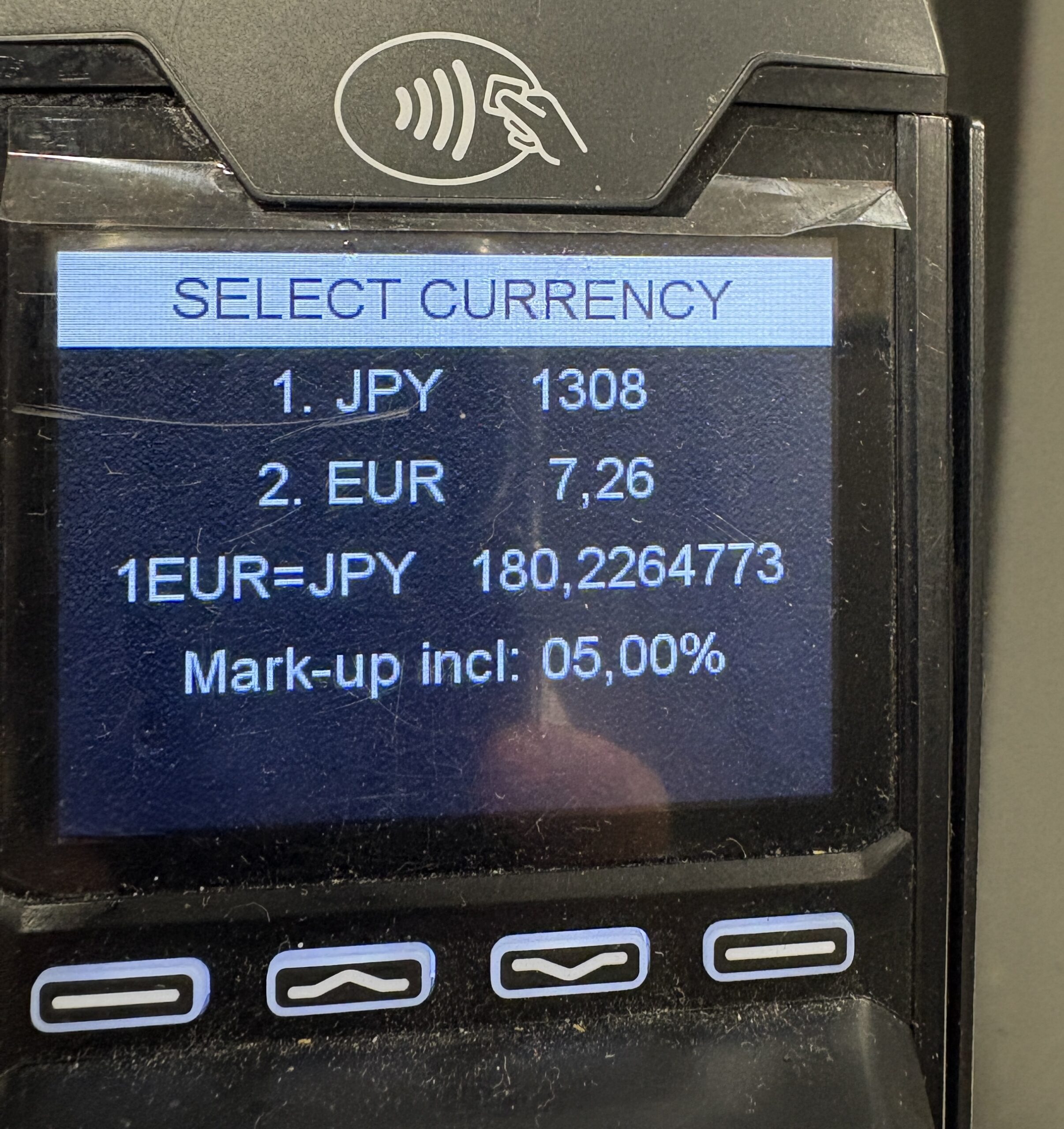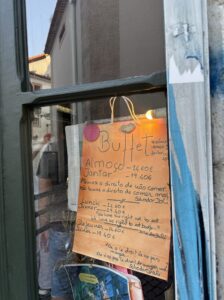When using a Japanese-issued credit card abroad, you can select the payment currency in the form of “EUR”, “JPY”? you may be able to select the currency in which you wish to settle your account. This is called DCC (Dynamic Currency Conversion), which is a convenient mechanism, but it comes at the cost of a fairly high fee.
Conclusion.
Conclusion: always choose the local currency as the currency of payment
When you use a credit card issued in Japan abroad, you may be offered payment in Japanese yen through the Dynamic Currency Conversion (DCC) system, but it is highly recommended to choose the local currency of the country you are visiting.
Portugal is currently 171 yen/1€, but if you use DCC, it will be settled at 180 yen/1€.
It is customary to pay about 5% more.
In addition, depending on the credit card, there is an overseas administration fee of 2-3%.
Even if you use it for travel, you should be aware of it because it would be a good amount of money if you were eating a nice meal or buying a gift.
What is a Dynamic Currency Conversion (DCC) payment?
DCC stands for ‘Dynamic Currency Conversion’.
In a nutshell, it is a service that allows you to pay overseas by converting payments into your home currency (Japanese yen) on the spot.
For example, let’s say you have made a purchase of USD 100 at a shop in the USA.
If you use DCC, the cashier’s terminal or clerk will present you with the amount in Japanese yen on the spot, such as ‘16,000 yen’, and the payment will be confirmed at that amount.
This is easy to understand at first glance, but a conversion fee of around 5% is added here. This is a useful feature, but it is not recommended as you can lose money without knowing it.
What happens when the choice is between local currency payments and DCC payments?
When you hold your credit card over the payment terminal, you will see “SELECT CURRENCY”.

The trap is that even if you pass ‘2. EUR’ on the above screen, it will ask you to check again and push for DCC.

Press 1, 2 to run the settlement.

If you select “ACCEPT CONVERSION”, the payment will be made in DCC and the amount will be debited from your Yen deposit account after being converted into Japanese Yen at the merchant’s set rate.
Therefore, it is more profitable to settle in the currency of the country you are visiting, so when you are in Europe, press
2: EUR,
2) REJECT CONVERTION
to settle your payment!
How can I shop in foreign currency for the best value for money?
Wise debit card
The Wise debit card offers up to twice the savings on payments compared to Japanese bank cards.
The Wise debit card is linked to a Wise multi-currency account. Multi-currency accounts are a great way to manage and pay for a variety of foreign currencies simultaneously in one account.
For example, let’s say you are travelling to Hawaii and you want to spend USD 1,000.
If you already have US dollars in your Wise account, there is no fee, and if you exchange money from Japanese yen, you only pay a 0.5% fee (about USD 5). Japanese bank cards typically charge a 2%-3% fee, so the Wise card is a good value.
When you create a new WISE account, you can also use a coupon for a partially free money transfer fee.
If you are sending money to an overseas bank, this is also a good place to start.

SMBC Trust Bank’s GLOBAL PASS is also recommended.
If you have an account with SMS Trust Bank, you may also be interested in the GLOBAL PASS.
With SMS Trust Bank, you can have a Japanese yen account as well as a foreign currency account with this international cash card with debit function.
It is easy to use as the foreign currency deposited in the foreign currency deposit account can be used directly as a means of overseas currency settlement. As the money is debited from the foreign currency deposit account, there are no overseas settlement fees for credit cards. (This would be charged if it were to be debited from a Japanese yen account.)
Also, with SMBC Trust Bank’s GLOBAL PASS, exchange fees are waived if you meet the conditions. See also this article.













